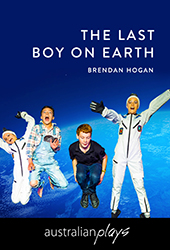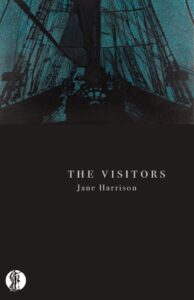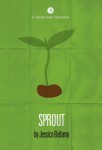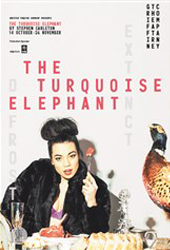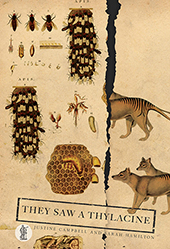
About the Collection
Theatre has always engaged with pressing issues of the day, so it’s no surprise that in recent years an eclectic body of work has emerged from Australian playwrights that are in conversation with sustainability, climate change and threats to the natural world. Carleton & Hay (2020) describe this as a “groundswell of work… in a range of different modes and genres, including magical realism, eco-critical gothic, sci-fi, solo performance and variations on naturalism.”
This play collection is intentionally broad in scope – it includes plays suitable for exploration with primary through to tertiary students, with a diverse range of theatrical styles and themes represented. The plays in this collection encompass the voices and experiences of young people, people living in remote and rural areas, and Aboriginal and Torres Strait Islander peoples. There are perspectives that are grounded in the challenging realities of the present, those that shine a light on the struggles of the past, and many that imagine a range of strange and dystopic futures.
Where possible, we’ve consulted with playwrights to get their take on how teachers can approach their work in the classroom – their invaluable insights are centred in this collection.
Australian Curriculum: Sustainability
Sustainability is one of only three cross-curriculum priorities in the Australian curriculum. Sustainability education is futures-oriented and aims to equip students to create a more ecologically and socially just world.
Australian plays are a rich resource to explore these issues and deepen students’ understanding of sustainability across several learning areas:
- In the English classroom, a close study of a scene or monologue from one of the plays listed below can be one of a range of texts that help students investigate and analyse ideas and information related to sustainability. There are also several plays in this collection which can be used as stimulus for making and responding, including creating texts that inform and persuade others to take action for sustainable futures.
- In the Drama classroom, scene work from one of the plays listed below can provide engaging and thought-provoking dramatic contexts related to sustainability. A school production of one of the plays can help students express world views, while also giving scope to consider issues of sustainability in relation to production design.
- In the Humanities and the Social Sciences classroom, a close study of a play or scene from a play listed below can help develop students’ understanding of the key historical, geographical, political, economic and societal factors involved in sustainability, and how these different factors interrelate. Many of the plays provide detailed and personal insights to the lived experiences of Australian communities affected by climate change.
Scripts
Recommended for Primary+
Synopsis: The Island of The Proud Circle has sprung a leak and its citizens must find a solution to stop their home disappearing forever. But it’s going to take all the ingenuity of their youngsters to ensure they don’t lose their way of life in the process.
A play to: Read, read aloud, study, stimulus for making/responding
Recommended for: Year 3+
Cast: 1 (1 female identifying)
Styles: storytelling, narration, fantasy, adventure
Themes: environmental change, community, refugees, connection to land
The central tenet of my practice is a response to the fact that in so many works for young people, the young audience watching or young performers embodying are told what a play should mean or be about, and what they are expected to read into it or learn from it. And I really dislike that, because it’s a supposition we’d never make for adult audiences.
So my main thought to offer (both to the students realising it, the teacher leading it, and the audience viewing it) is that this play – and indeed all my plays – is about whatever you imagine it to be. The themes or characters which resonate for you are correct. Your take on it (even if it’s one I didn’t know of when writing it) is the right one. And I hope you feel emboldened by that notion and can work to bravely unpack and come to understand your character as only a performer can, from inside and out.
Beyond this, I’ll say that it’s deliberately light on stage directions, so that your interpretation of its realising is what prevails. So long as the text remains, I give full permission to embody or present it however you wish.
Finally, tonally the play is an exercise in moving between levity and pathos. There’s a lot of momentum in some of the text, and so the invitation (should you wish it) is to play and expand and drive a story, and so take the audience along for that ride too – it can be silly and comical and frivolous. And then other moments are deliberately heavy, with the invitation that they be sat in and be something more considered. The intercutting of these two (whimsy and seriousness) is intentional and hopefully offers up some nice dynamics for you to play with.
-Finegan Kruckemeyer
Synopsis: Two intertwining stories follow Maddy, a ten-year-old climate champion, and Katie, the assistant of a climate-denying politician, as they set out to save the planet.
A play to: read aloud, perform excerpts in class, stage or produce
Recommended for: Year 5+
Cast: 7 (2 female identifying, 4 male identifying, 1 gender unspecified)
Styles: drama, realism, magical realism, puppetry
Themes: climate change, sustainability, political activism, student activism
The play has a lot of real life connections, and was written over the period 2020 to 2022. Aside from the inspiration of my own school-striking daughter, the lead character of Maddy is an amalgam of multiple real-life Australian school strikers. Students would be encouraged to research Harriet O’Shea, from Bendigo, who co-founded the Australian school strike movement with her friends, just weeks after Greta Thunberg made the strikes famous in Sweden. Also Anvil Sharma, who joined with others in one of Australia’s first and most famous court cases against the government to attempt to have the rights of young people recognised in climate decisions. As well as of course Greta Thunberg herself.
There are several excellent podcasts and articles that I have noted linked to in the education kit that are worth students and teachers exploring. I would also highly recommend the film, 2040, also an inspiration to me in writing this play, as well as Rebecca Huntley’s excellent book, How to Talk about Climate Change in a Way That Makes a Difference.
As far as advice for teachers and students approaching and interpreting the script, I think it’s very open to anyone to find their own path in production design. The play certainly has some fun challenges in terms of design, moving across a great many locations, and even including a number of endangered species in the final act. While we used video design and puppetry in the original production there will no doubt be multiple other potential solutions. And while we limited our staging to a small cast of four with one actor playing several roles, there is opportunity for a larger cast if desired. As noted in the script, there is however, given the subject matter, a request to consider the environmental impact of design choices.
Only one other note, which is to note that as Maddy’s storyline is based in reality, it is intended to be portrayed naturalistically, while Katie’s storyline is magical and fantastical and offers the opportunity for a heightened theatricality and playfulness in design and performance style.
-Chris Bendall
Synopsis: It’s 2043 and 10 years since the apocalypse. Ten-year-old Sprout lives in a jungle of junk when two cosmonauts arrive to learn the secret to his survival.
A play to: Read aloud, perform excerpts in class, stimulus for making/responding
Recommended for: Years 4-8
Cast: 3 (1 female identifying, 2 male identifying)
Styles: comedy, drama, fantasy, puppetry
Themes: climate change, sustainability, artificial intelligence, technology
You don’t have to launch a full-blown production to get the most out of the script. In parts, it can work as a scene study, monologue or duologue. If you do head down the production path, the show can be staged at a small cost, with the set and costumes made from preloved or repurposed materials. Making use of upcycled or repurposed objects not only helps the budget, but also allows the production the production to reflect the values and themes of the script.
The story touches on several essential themes that could lead to further discussions when exploring the script:
- Survival and Isolation: Sprout’s life of isolation in a world marred by apocalypse, characterised by a lack of sunlight and extreme limitations on exploration, highlights the challenges of survival in a harsh environment. This theme raises questions about human adaptability and resilience.
- Sustainability: The influence of Dear Leader’s fanaticism regarding sustainability presents a contrasting perspective on living a simpler, eco-friendly life amidst environmental destruction. It asks us to consider the balance between sustainable living and the human need for comfort and convenience.
- Technology and Consumerism: The introduction of Pete, an advanced AI, and the influence of technology challenge Sprout’s traditional way of life. It underscores the role of technology in shaping society and the tension between technological advancement and sustainability.
- Deception and Belief Systems: The revelation about Dear Leader’s true identity as a failed actor and cult leader highlights the theme of deception. It explores how people can be led to believe in something, and what happens when that belief is shattered.
- Hope and Change: As Sprout encounters Google’s mission to colonise the moon and the potential for a new future, the story introduces hope and change. It prompts readers to reflect on the possibilities for humanity’s resurgence even in dire circumstances.
-Brendan Hogan
Recommended for Lower Secondary+
Synopsis: A reimagining of the arrival of the First Fleet from a First Nations’ perspective.
A play to: Read, read aloud, study, perform excerpts in class
Recommended for: Year 7+
Cast: 7 (7 male-identifying)
Styles: drama, comedy, realism
Themes: First Nations connection to land, colonisation, identity, resilience
Advice for teachers
Don’t be scared to explore First Nations themes and stories. It is our shared history that we are engaging with and a valid thing to be reflecting on. You might not ‘know it all’ but allowing yourself to explore is important as otherwise we are made invisible. Can you engage with a First Nations person who might be connected with your school community – a parent, for example. There is not one point of view but as many as there are First Nations people.
Suggestions for approaching and interpreting the script
- Explore the context – that Cook visited 18 years before and some of his exchanges with Aboriginal people were problematic and would have influenced how they responded in 1788. Knowing the reasons for sending convicts to the other side of the world also gives context.
- Explore the significance of 26 January in our national psyche and that it only became ‘Australia Day’ very recently.
- Discuss why I might have given the characters western clothes and western names. Is it a historical narrative or a contemporary one? Keeping in mind the Aboriginal concept of time where past, present and future co-exist.
-Jane Harrison
Synopsis: Based on written and oral testimony from survivors, the play chronicles the physical and psychological devastation of flood in a small town.
A play to: Read, read aloud, study, perform excerpts in class
Recommended for: Year 7+
Cast: 8 (4 female identifying, 4 male identifying)
Styles: verbatim, realism, drama
Themes: natural disasters, community, resilience
Watermark was written to commemorate the 10 year anniversary of the 18 metre flood which wiped out the NT town of Katherine in 1998. The play was researched and written with the involvement of the Katherine community in 2007 and performed there in 2008, reprised at the Katherine Festival in 2009 and Darwin Festival in 2010. In 2011 it won the Australian Writers Guild Award for Best Community Theatre work.
In my book BOWERBIRD: The Art of Making Theatre Drawn From Life, I dedicate a chapter (Chapter 27) to the process of making Watermark. Teachers may like to investigate that book further for all aspects of the verbatim, or as I call it ‘close work’, theatre making process that they can explore with their students.
– Alana Valentine
The playwright suggests the following discussion points:
In addition to the issues and ideas raised chapter [Chapter 27 of BOWERBIRD] I would offer the following provocations and prompts for teachers and students to consider when studying Watermark:
- In Watermark, a dispute arises between people in some part of Katherine about whether others who did not lose their homes (but still lost their town) have as much cause to be saddened by the flood disaster. What instances have students seen of the human tendency to rank and judge the comparative suffering of others during a natural disaster? Do students agree that humans like to insist that suffering is always proportional to perceived loss, rather than accept that suffering is relative to who the person is and what their circumstances are/were before the disaster? Or do students disagree with this entirely and think only those who have lost property and/or loved ones have a right to grieve?
- During the making of the work there were many people in Katherine, who opined that the play should not be made, that the flood should simply be forgotten. What kept me going was the huge community support for the work and the number of people who came up and said that to have their perspectives validated and commemorated was a wonderful experience. I was told that the play made some of them realise how far they had come, others how much they still lived in fear, and still others – people who had not been in Katherine at that time – said it gave them an understanding of some of the post-traumatic stress behaviour that they could still see in the Katherine population. What do students think of these two distinctive ways of coping – bury the past and simply move on, or re-examine the past to gain understanding and then move on? Can a discussion validate that both courses of coping can be useful and valid?
- How does the playwright use the central poem to embody and give agency to the Katherine River? How does the language of using poetry assist with the personification of the river?
- How has the playwright specifically written the work to be performed by community/amateur actors? What techniques or approach to the play’s construction can students identify?
– Alana Valentine
Synopsis: A mosaic of snapshots capturing how it feels to live through this historical planetary transformation.
A play to: Read aloud, study, perform excerpts in class, stage or produce
Recommended for: Year 9+
Cast: 5-25 (gender unspecified)
Styles: comedy, contemporary, drama, ensemble, episodic, non-linear, one-act, political
Themes: climate change, globalism, hope, resilience, science, sustainability
Staging this one should be comparatively straightforward, I think. Teachers are encouraged to pick and choose their favourite scenes, and assemble them in a playlist as they see fit.
My biggest note is that having a bunch of disconnected scenes is great fun for a while, but it becomes fatiguing for an audience as they constantly have to work out where they are and who’s who. For the Belvoir production, we made a hard limit that the show could be no more than 70 minutes. For a school production, I’d aim to keep it well under an hour. I’m sure they’re not going to be tempted to do all the pieces, but just in case!
… Rather than trying to make it ‘impactful’ or ‘encouraging audiences to take action’, my focus instead would be on trying to make the work interesting. We picked those specific scenes to be in the final script because they were the most interesting stories – the most unusual, surprising or provocative examples of real things happening right now in the world. The goal of the script is to direct the audiences’ attention to these real world stories.
With that in mind, I’d recommend keeping the focus on sharing these stories in a clear and straightforward way, keeping it quick and avoiding big emotional swings. None of the scenes were really written to be performed at full tilt emotionally – you can go there if it’s useful in rehearsals, but I’d probably dial it back in performance. But that’s a suggestion only, follow your instincts!
– David Finnigan
Synopsis: In an Australia of the future, where everything has dried up, run out or fled, four fragmented souls are united by a self-appointed prophet on the radio, the Weatherman, who shares classic poetry with his listeners.
A play to: Read aloud, study, perform excerpts in class
Recommended for: Year 9+
Cast: 5 (2 female identifying, 3 male identifying)
Styles: drama, fantasy
Themes: extinction, apocalypse, relationships, climate change
I recommend gathering in full all of the poems that are read by the Weatherman and reading those with the students. For me, they tell the story of the play and of peoples’ evolving psyche as they navigate the challenges and changes of this world.
Sprout, on the surface, can seem quite a bleak work. I guess when a play is set in a dystopian world, that feels natural. However, I recommend the teachers and students focus on glimmers of joy, comedy and beauty when reading. These are the moments that keep the couples growing together or towards the things that will serve them.
It is very powerful to use real fruit in the scenes that have fruit. The scent of orange permeates the performance space and the audience, parched for some hope, drink it up. The casting should reflect the multiplicity of cultures across Australia.
– Jessica Bellamy
Recommended for Upper Secondary+
Synopsis: The Duncan family return to Big Dog Island in Bass Strait for the annual mutton-bird harvest, where one generation is giving way to the next and government regulation is making its presence felt.
A play to: Read, read aloud, study
Recommended for: Year 10+
Cast: 8 (5 male identifying, 3 female identifying)
Styles: drama, comedy, naturalism
Themes: family, First Nations connection to land, intergenerational change, tradition
Synopsis: Inside an exclusive compound, three women from the same mega-rich family respond to the unfolding environmental cataclysm occurring outside.
A play to: Read aloud, study, perform excerpts in class
Recommended for: Year 10+
Cast: 5 (4 female identifying, 1 male identifying)
Styles: absurdism, comedy, drama
Themes: climate change, apocalypse, corruption, political activism, eco-terrorism
Synopsis: Set in Tasmania in the 1930s, the stories of a thylacine tracker and a zookeeper’s daughter interweave as they both seek to protect a threatened creature.
A play to: Read aloud, study, perform excerpts in class
Recommended for: Year 10+
Cast: 2 (2 female identifying)
Styles: drama, monologue
Themes: conservation, history, gender, women and patriarchy, nature
A recent production had a team of Beaties and a team of Alisons, all on stage together. This could be something to consider when reading it in class. It’s also an option to have different people playing the male characters.
- What is at stake for the characters?
- How do the students relate to the characters?
- What species are on the brink of extinction in Australia today? What are we doing about it?
- The Alison character is based on a real person, it’s a true story. The Beatie character and story is fictional, but her story is drawn from true stories. How can students make up their own stories drawn from true stories?
Have fun! It’s a ‘play’ so ‘play’!
In the original production, we barely moved. What happens when you tell a good story? How do you allow your audience to best lean in and listen?
What happens if you physicalise the story?
Experiment with playing against the rhymes – i.e. what happens when you don’t emphasise the rhymes?
– Justine Campbell and Sarah Hamilton
Recommended for Tertiary
Synopsis: A militant cell of eco-activists demand Australia cease all carbon emissions and coal exports.
A play to: Read, study, stage or produce
Recommended for: tertiary
Cast: 9 (9 female identifying) – see playwright’s note regarding casting for a school/university production
Styles: comedy, absurdism, satire
Themes: climate change, political activism, eco-terrorism
The main thing to be aware of from a staging perspective is that the script started life as a scrapbook – actually a tumblr blog. One of the reasons that it took the form it took was that I’d been told over and over again by a few different theatre companies that no-one would ever produce it – so I thought, well, why not make the script as playful as I want it to be?
A script for me is often a set of obstacles and challenges for a director and a group of actors to overcome. I don’t know how to solve them myself, and I don’t even know if they can be solved. But watching a group of artists try to tackle those obstacles is part of why I write scripts instead of any other form. You can imagine each of those Kill Climate Deniers scenes as a different kind of challenge to be solved. There’s a straightforward solution (just ignore all the extra stuff and do the dialogue as it appears), but it’s always worth trying out a couple of experiments and seeing if you can find some unexpected way through it.
A play is also a mixtape – here’s me writing for Griffin about how I tried to structure the script like a DJ mix.
…No need to follow the all-female casting guideline for a school production, but it might be worth having a conversation about why we chose to make that requirement. Also I have no problems with male actors being used purely as support cast. There was one university production where they had a male actor who could do amazing cartwheels, so they had him as the stunt performer for a couple of the roles (played by female actors) – he would cartwheel on as them, and then vanish, and they’d continue as they were. This play is designed for that kind of chaos.
– David Finnigan



